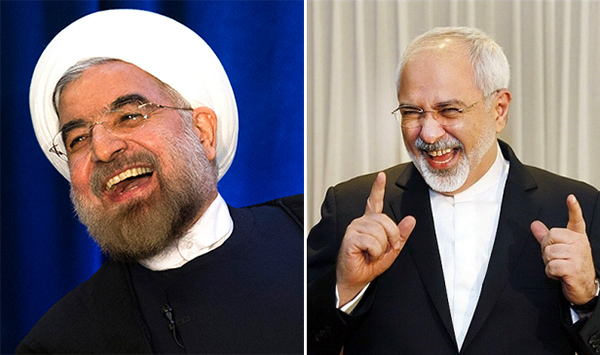Which Nation is (Still) the Number One Sponsor of Terrorism?
Peter Huessy/Gatestone Institute/October 03/16
The June State Department report also lists 58 “Foreign Terrorist Organizations,” of which over a dozen are allied with Iran. One Iranian Al Qaeda agent was specifically sanctioned by the US Treasury for distributing cash to the same al-Nusra Front the Iranian Foreign Minister complains is a terrorist organization.
Even more chilling has been Iran’s joint missile and technology cooperation with North Korea, making the potential use of weapons of mass destruction against the US a growing possibility.
On September 14, the Iranian Foreign Minister wrote in the New York Times that, “coordinated action at the United Nations to cut off the funding for ideologies of hate and extremism” is needed along with “a willingness from the international community to investigate the channels that supply the cash and the arms” to terrorists. He concluded with an appeal to “join hands with the rest of the community of nations to eliminate the scourge of terrorism and violence that threatens us all.”
Given that in 2015 alone there were some 11,774 terrorist attacks in 92 countries, killing 28,300 people, one can agree that such action is needed. The irony, of course, is that the US Department of State released its annual report in June on state sponsors of terrorism, and Iran was the gold medalist for the world’s number one terrorist nation — an honor it has held since 1984. Only two other countries were listed as state sponsors of terror: Syria and Sudan.
Having Iran’s Foreign Minister call for an end to terrorism is like having Bonnie and Clyde call for law and order.
The report makes clear, along with other available evidence, that much of the terrorism in the world is Iran’s handiwork — especially the terrorism directed at America.
The report emphasized that Iran “remained the foremost state sponsor of terrorism in 2015, providing a range of support, including financial, training, and equipment, to [terror] groups around the world.” Iran provided arms and cash to terrorist groups and to nearly 30 Shia terrorist militias in Lebanon, Syria, Iraq and Afghanistan, especially Hezbollah, as well as Hamas, Palestinian Islamic Jihad, Houthi rebels in Yemen, and Shia militias in Bahrain.
On September 13, 2015, the US Central Command officially reported that Iran is specifically responsible for killing at least 500 American soldiers through the use of Improvised Explosive Devices (IEDs) in Iraq and Afghanistan.
And the current defense minister in Iran, appointed by President Rouhani, orchestrated the bombing of the Marine barracks in Lebanon in 1983 that killed 241 American soldiers.
Overall, the State Department report lists 13 “terrorist safe havens” around the world where “terrorists are able to organize, plan, raise funds, communicate, recruit, train, transit and operate.” These safe havens include remote areas in Southeast Asia, the Middle East and South America, virtually all of which have seen terrorist related activity by Iran and its IRGC. In just the Americas, this includes, says the Clarion Project, intelligence and terrorist networks in Argentina, Brazil, Uruguay, Chile, Columbia, Guyana, Trinidad and Tobago, and Suriname.
The State Department report also lists 58 “Foreign Terrorist Organizations,” of which over a dozen are allied with Iran. One Iranian al-Qaeda agent was specifically sanctioned by the US Treasury for distributing cash to the same al-Nusra Front the Iranian Foreign Minister complains is a terrorist organization.
The current defense minister in Iran, appointed by President Hassan Rouhani (left), orchestrated the bombing of the Marine barracks in Lebanon in 1983 that killed 241 American soldiers. Foreign Minister Javad Zarif (right) complains the al-Nusra Front is a terrorist organization, even as an Iranian al-Qaeda agent was specifically sanctioned by the US Treasury for distributing cash to the organization.
Iran has evidently harbored senior Al Qaeda operatives since 9/11, including facilitating the flow of fighters and funds to al-Qaeda through Iran — a kind of jihadi pipeline. In the mid-1990s, reported the Clarion Project, Iran negotiated an agreement with Osama Bin Laden to allow al-Qaeda terrorists to freely transit Iran. And, of course, Tehran’s senior leadership financed and facilitated, along with Hezbollah, the training of the 9/11 hijackers that killed nearly three thousand people in New York, Washington and Pennsylvania. According to a December 2011 decision by Judge George B. Daniels “Iran and Hezbollah materially and directly supported Al Qaeda in the September 11, 2001 attacks.”
But 9/11 was not Iran’s first terror attack against the United States. The Iranian government also financed the attack on the Pan Am flight that blew up over Scotland in December 1988, and was also responsible for the 1996 terror attacks against Americans at Khobar Towers in Saudi Arabia, the 1998 bombings of the American embassies in Kenya and Tanzania and the 1983 bombings of our Marine barracks and embassy in Lebanon.
A number of American courts, upon hearing the evidence of Iranian government support for terrorism, found Iran guilty of terrorist attacks against the United States and its citizens, culminating in at least $56 billion in damages, which included being found guilty complicity in the 9/11 attacks.
Even more chilling has been Iran’s joint missile and technology cooperation with North Korea, making the potential use of weapons of mass destruction against the US a growing possibility.
If any UN action is taken to stop terrorism, it should start with shutting down the number one source of state-sponsored terrorism in the world — the Islamic Republic of Iran.
**Dr. Peter Huessy is President of GeoStrategic Analysis, a defense consulting firm he founded in 1981, and was the senior defense consultant at the National Defense University Foundation for more than 20 years.
© 2016 Gatestone Institute. All rights reserved. The articles printed here do not necessarily reflect the views of the Editors or of Gatestone Institute. No part of the Gatestone website or any of its contents may be reproduced, copied or modified, without the prior written consent of Gatestone Institute.




















